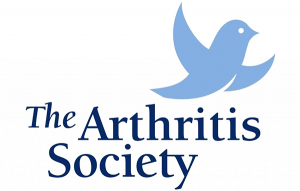Behcet's Disease
WHAT IS BEHÇET’S DISEASE?
Behçet’s (pronounced bay-sets) disease is a chronic inflammatory disorder. Most symptoms of this autoimmune disease are caused by vasculitis (pronounced vas-cue-lite-us) or inflammation of the blood vessels. The effects of the disease may include blindness, stroke, swelling of the spinal cord, and intestinal complications.
HOW COMMON IS BEHÇET'S DISEASE?
Behçet’s disease is common in the Middle East, Asia and Japan, and rare in Canada, the United States and Europe. In Middle Eastern and Asian countries, the disease affects more men than women. Elsewhere it affects more woman than men. Behçet’s disease tends to develop in people in their 20’s or 30’s, but can occur at any age.
WHAT ARE THE WARNING SIGNS OF BEHÇET'S DISEASE?
Symptoms of Behçet’s disease include recurrent ulcers in the mouth (resembling canker sores) and on the genitals, and eye inflammation. The disorder may also cause various types of skin lesions, inflammation of the joints, bowel inflammation, and meningitis (inflammation of the membranes of the brain and spinal cord).
Inflammation inside the eye occurs in more than half of the cases of Behçet’s disease and can cause blurred vision, pain, and redness.
Behçet’s is a multi-system disease. It can involve all organs and affect the central nervous system and the brain, causing memory loss and impaired speech, balance, and movement.
Inflammation of the joints occurs in more than half of all patients with Behçet’s disease, causing pain and stiffness, especially in the knees, ankles, wrists, and elbows. Arthritis that results from Behçet’s disease usually lasts a few weeks and does not cause permanent damage to the joints.
WHAT CAUSES BEHÇET'S DISEASE?
- The cause of Behçet’s disease is unknown.
- There have been reports of a virus found in some individuals with the disease.
WHAT CAN YOU DO ABOUT BEHÇET'S DISEASE?
Treatment for Behçet’s disease is based on treating the symptoms to reduce discomfort and to prevent serious complications. Medication may be used to reduce inflammation and to regulate the immune system. Immunosuppressive therapy is also sometimes recommended.
As Behçet’s disease affects different parts of the body, patients usually need to visit several different doctors for treatment. It may be helpful to have one doctor coordinate treatments and monitor any side effects from the various medications. Often this doctor will be a rheumatologist, who is a specialist in treating inflammatory disorders like arthritis.
The following specialists may also be required to treat other symptoms affecting different body systems:
- Gynecologist (treats genital sores in women)
- Urologist (treats genital sores in men)
- Dermatologist (treats genital sores in men and women, and skin and mucous membrane problems)
- Ophthalmologist (treats eye inflammation)
- Gastroenterologist (treats digestive tract problems)
- Hematologist (treats disorders of the blood)
- Neurologist (treats central nervous system problems)
Medicine
Your doctors may prescribe creams or ointments to be applied directly onto the sores caused by Behçet’s disease, to relieve pain and discomfort. This medicine usually contains corticosteroids or other anti-inflammatory drugs to reduce inflammation. It may also contain an anaesthetic to relieve pain. Oral colchicine (pronounced: cole-chi-sene) and thalidomide may also help. These medicines are often used for sores on the genitals or in the mouth.
Inflammation of the joints related to Behçet’s disease is often treated with nonsteroidal anti-inflammatory drugs (NSAIDs– pronounced en-sedz) such as ibuprofen or ASA, or with steroids such as cortisone.
Corticosteroids are useful for managing symptoms in early stages of the disease and for acute severe flares. Immunosuppressive drugs can be used to help reduce inflammation throughout the body, and to lessen the number of disease flares. Immunosuppressive drugs are usually used for Behçet’s patients who develop eye disease or central nervous system problems. Intestinal problems related to the disease may improve with sulfasalazine.
A Word about Medication Safety
The need to effectively monitor new drugs once they have been approved and introduced into the market has been a key advocacy issue for The Arthritis Society for several years. This advocacy helps to ensure that unfavorable side effects are reported, documented, and addressed.
All medications have potential side effects whether they are taken by themselves or in combination with other herbal, over-the-counter and prescription medications. It is therefore important for patients to discuss the benefits and potential side effects of all their medications with their doctor.
Health Canada’s Marketed Health Products Directorate (MHPD) has also developed the MedEffect website. MedEffect’s goal is to provide centralized access to new safety information about health products in an easy to find, easy to remember location. It also aims to make it as simple and efficient as possible for health professionals and consumers to complete and submit adverse reaction reports. Finally, it helps to build awareness about the importance of submitting adverse reaction reports to identify and communicate potential risks associated with certain drugs or health products. visit MedEffect or call 1-866-234-2345 (toll-free).
Exercise
- Exercise helps reduce pain and prevents further joint damage. It can also help you maintain a healthy weight, which puts less strain on your joints.
- Not using a sore joint will cause the muscles around it to become weak, resulting in pain.
There are three types of exercises:
- Range of motion exercises reduce stiffness and help keep your joints moving. A range of motion exercise for your shoulder would be to move your arm in a large circle.
- Strengthening exercises maintain or increase muscle strength.
- Endurance exercises strengthen your heart, give you energy and control your weight. These exercises include walking, swimming and cycling.
Although rest is important during flares, doctors usually recommend moderate exercise, such as swimming or walking, when symptoms of the disease have improved or disappeared.
Moderate stretching exercises can help people with Behçet’s disease keep the muscles and tendons around their affected joints strong and more flexible. Low-impact exercises like swimming, walking, water aerobics and stationary bicycling can all help you maintain strength and flexibility and increase your endurance.
